Giant rabbits, a floating moon and other intriguing inflatables at ArtScience Museum’s latest exhibition
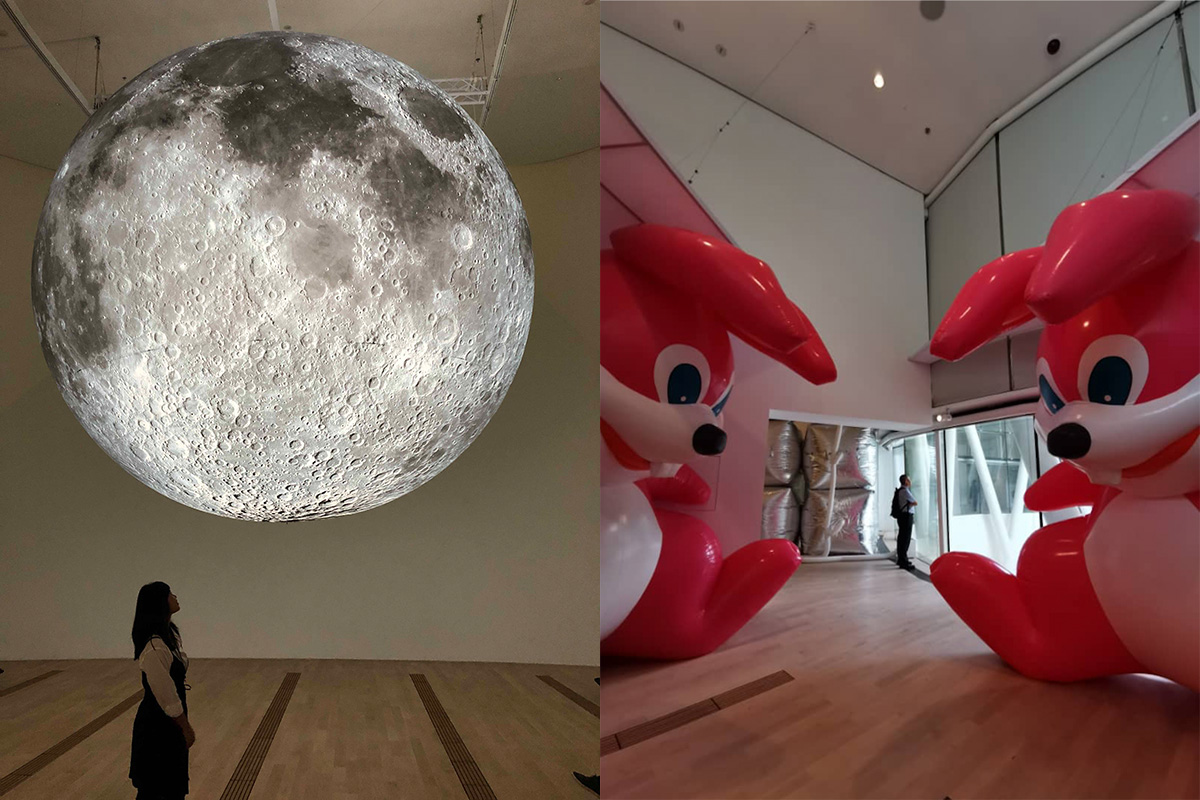 Thirsty for JUICE content? Quench your cravings on our Instagram, TikTok and WhatsApp
Thirsty for JUICE content? Quench your cravings on our Instagram, TikTok and WhatsApp

As time goes by, many discoveries and inventions that once awed society become an afterthought. About a hundred years ago, we couldn’t even get air conditioning. Now we whine when there’s poor Wifi connection. Inflatables are no less taken for granted by society, their role relegated to being children’s playthings, Chinese lanterns, blimps at parades, maybe even hot air balloons. We wouldn’t picture them as a means to protest against the Nazi regime and deflect air raids, as art and a medium to convey activism and expression, or as an alternative habitat to solid structures.
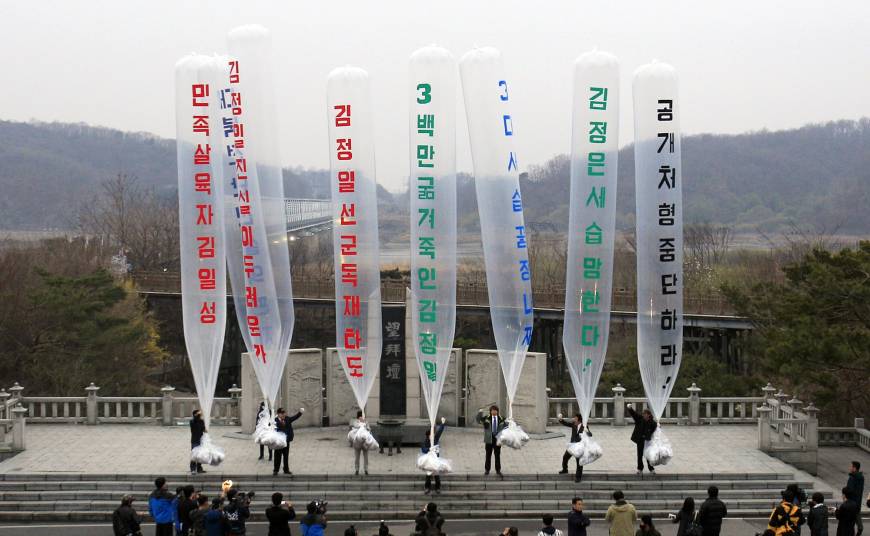
Right on time to school and rekindle the awe in us again, Floating Utopias, an exhibition of more than 40 artworks, including eight dramatic larger-than-life inflatables, has arrived at ArtScience Museum, Marina Bay Sands.
A visual spectacle, the exhibition takes a playful and poetic look at inflatable objects, showing how they have been used in art, architecture and social activism over the decades. Presented in five chapters, the exhibition shows how inflatable objects have opened up new possibilities, from the first hot air balloon to exploration of outer space.
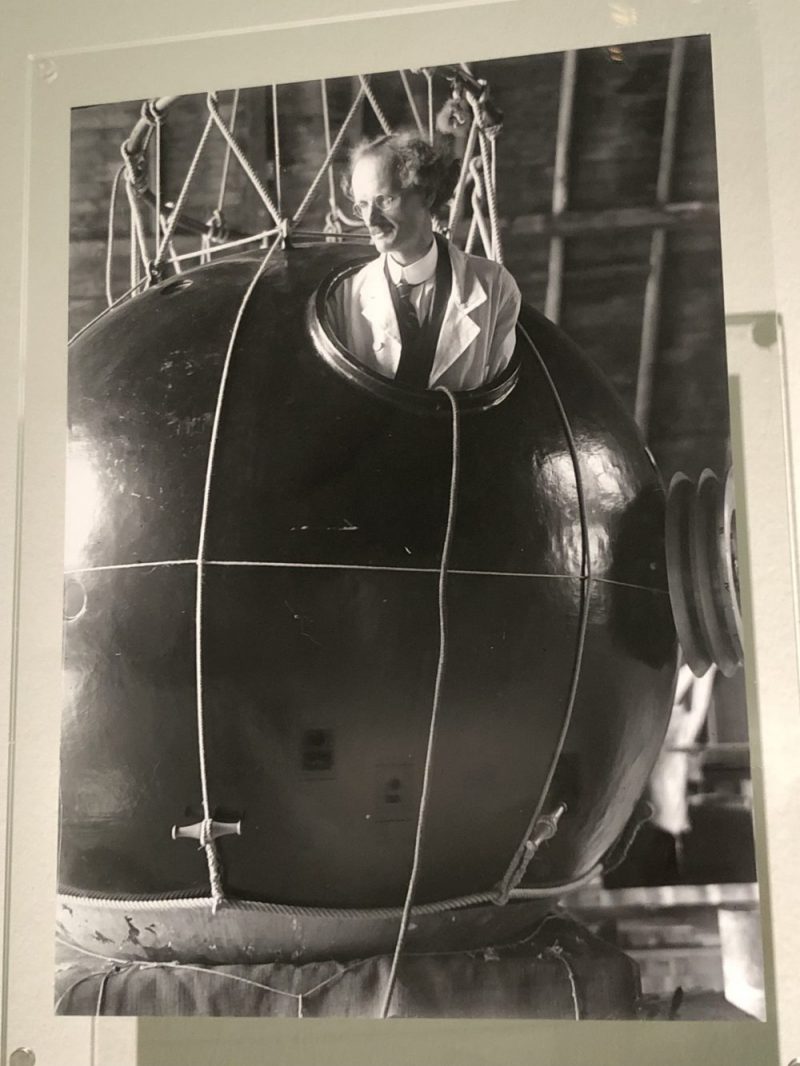
The exhibition is grounded by a strong political narrative that reveals how inflatable objects were used for ideological propaganda in the 20th century, and how artists countered these tendencies by using them as playful tools of social activism, and created new innovations within architecture and urban planning that reshapes our relationship with the environment.
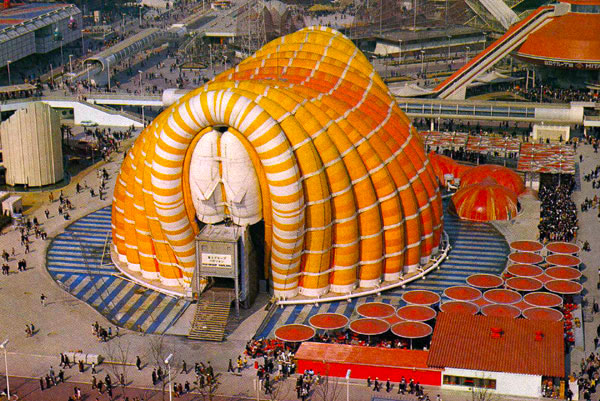
Here are a few of our favourite pieces from the exhibition:
Somehow I Don’t Feel Comfortable + WALTER
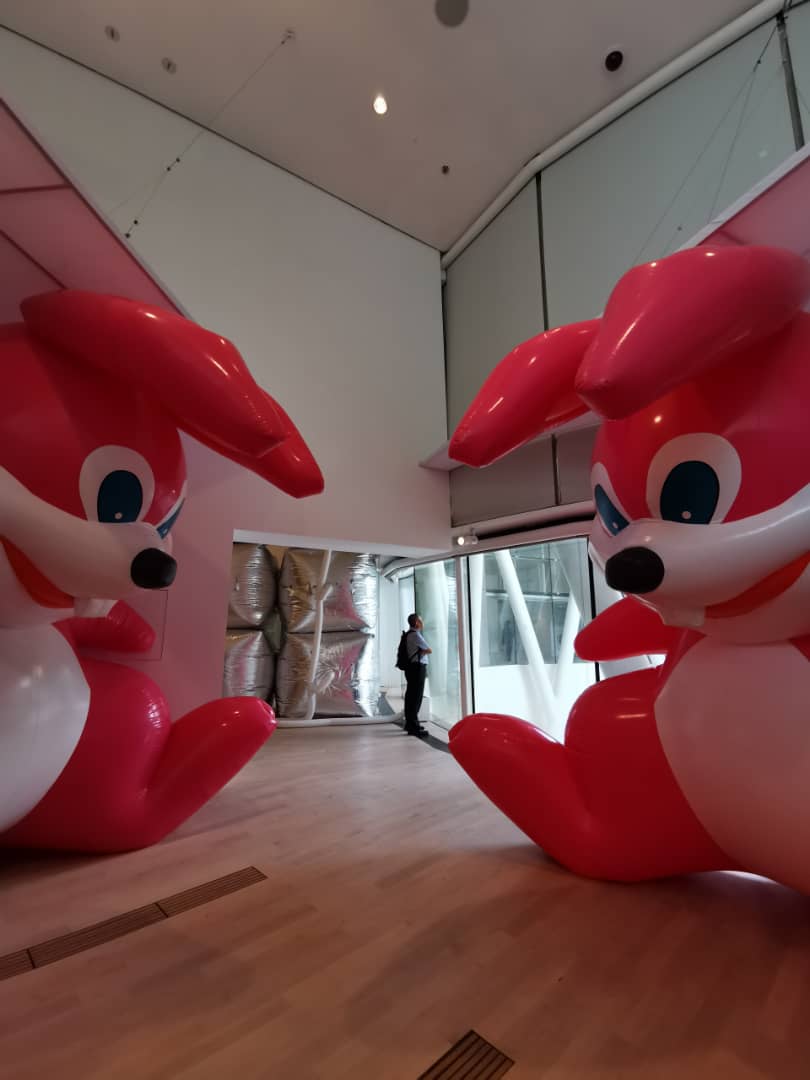
Two bunny pieces with two completely different messages. Momoyo Torimitsu’s Somehow I Don’t Feel Comfortable is a take on the constricted nature of modern living in many large cities in Asia. In Japan, small apartments are often called ‘rabbit hutches’ in reference to their small size. Have you ever felt cute yet uncomfortable? This piece did that to us.

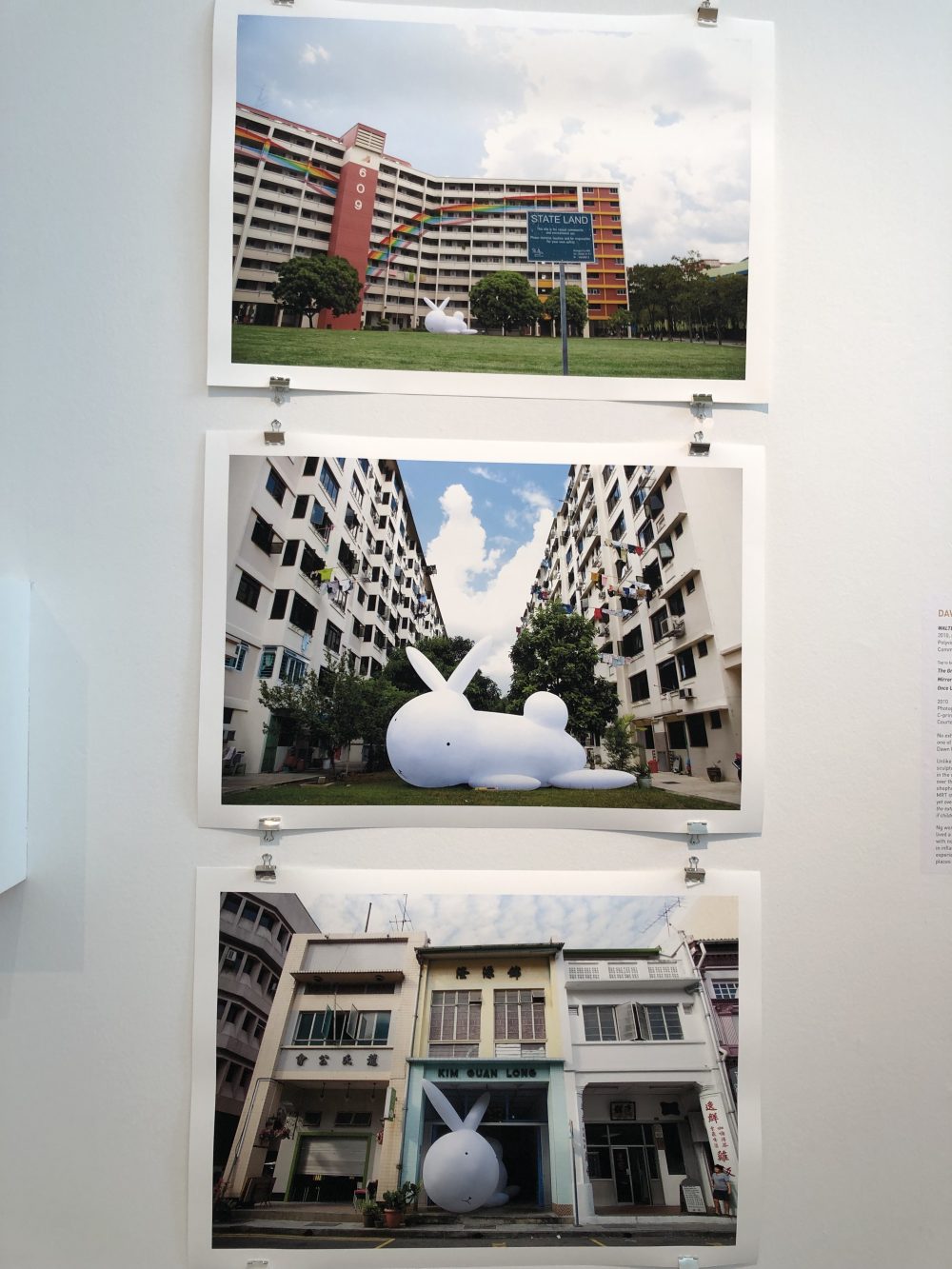
Resembling a popular childhood candy of Singaporeans, WALTER is no stranger to locals having been displayed over the years in public. In fact, this is the Dawn Ng’s 8th version of WALTER. Her large curious rabbit sculpture was designed specifically to be seen outdoors—in local neighbourhoods, shophouses, hawker stalls, convenience stores, playgrounds and MRT stations—drawing attention to some of Singapore’s inherently familiar, yet overlooked spaces. Like many artists who work in inflatable media, her work acts as a tool to disrupt everyday lived experience, inviting us to reconsider the character and charm of the place where we live.
Survivaball
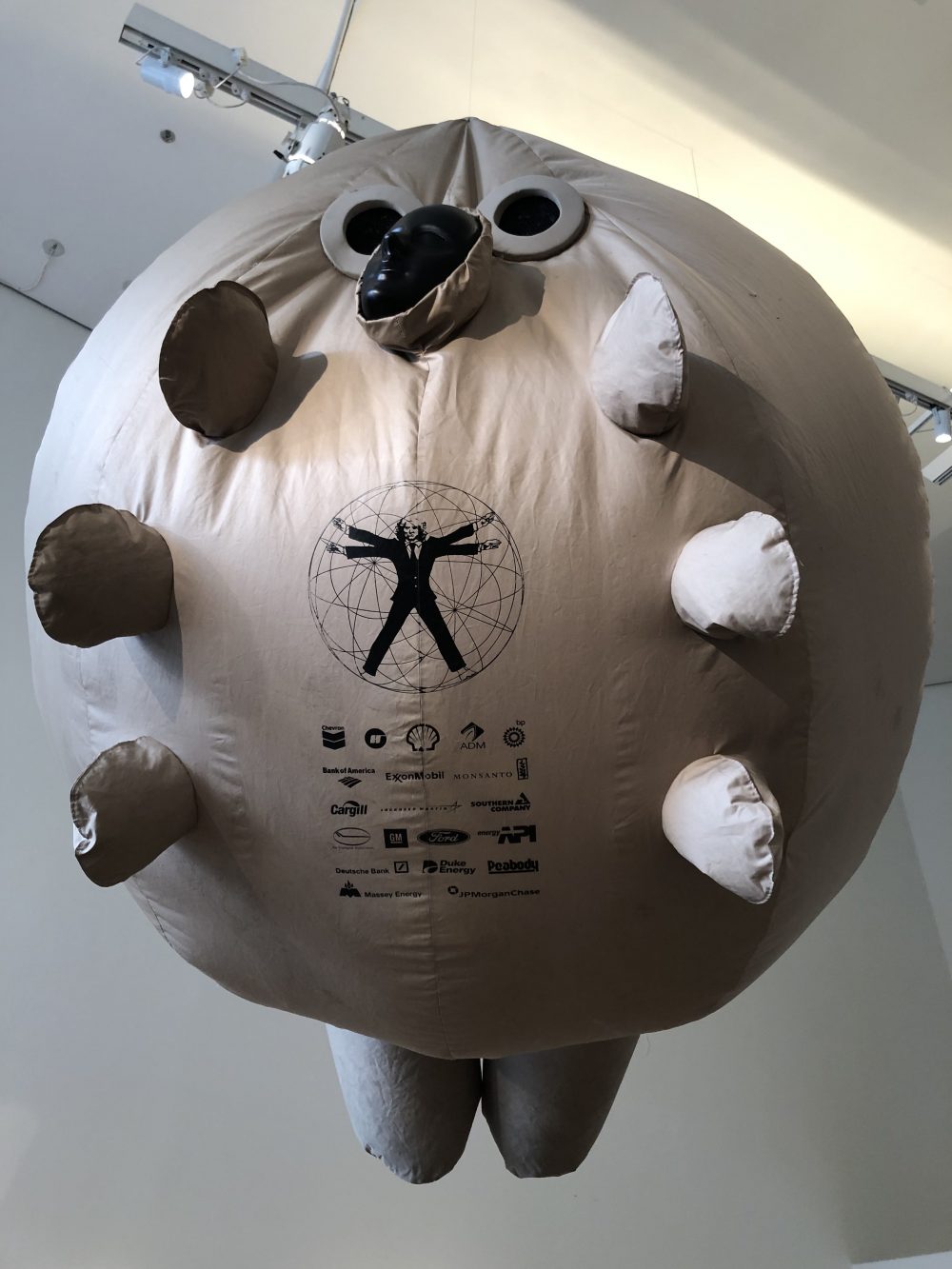

Probably the most hilarious piece of the exhibition, the Survivaball was created by The Yes Men. Their Vimeo profile describes them as “a posse of activists who infiltrate the world of big business and pull off outrageous pranks that highlight how unrestrained corporate greed is destroying the planet.” A clear parody of the hazardous material suit, the Yes Men debuted the Survivaball suit as a means to “protect managers from natural or cultural disturbances” cause by climate change at a legit insurance industry conference, much to the amusement (and annoyance) of the attendees. Check out the vid of that below:
The Yes Men: Survivaballs from The Yes Men on Vimeo.
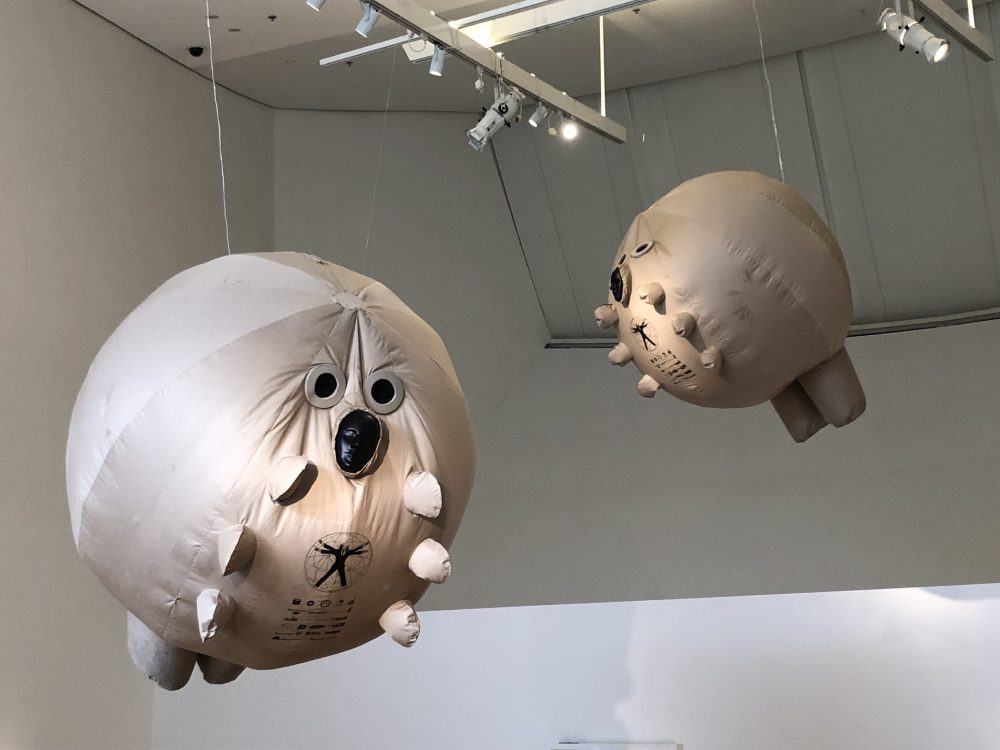
Museo Aero Solar
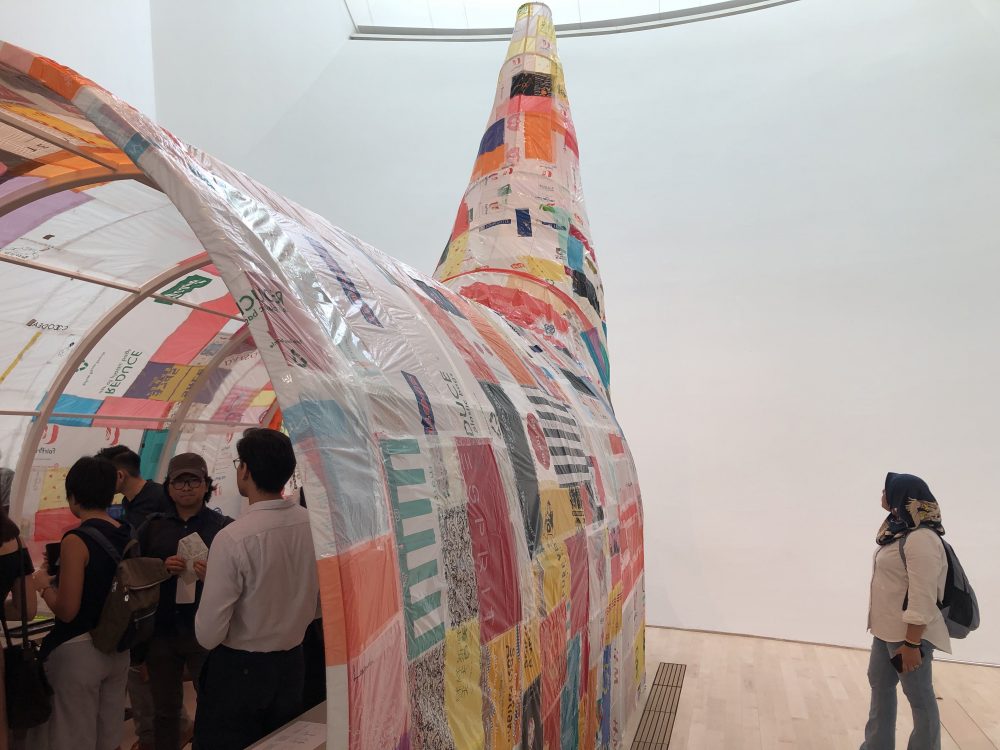

Museo Aero Solar by Tomás Saraceno, a lighter-than-air balloon sculpture powered by the heat of the sun, invites the audience to collectively create their very own solar-powered inflatable. Saraceno and his Aero Solar Foundation conducted workshops around the world encouraging communities to create their own solar balloons using recycled plastic. The latest Museo Aero Solar workshop is situated inside the galleries of Floating Utopias. Throughout the course of the exhibition, visitors are encouraged to bring used plastic bags to ArtScience Museum and work together inside the galleries to create a giant, colourful recycled plastic patchwork balloon, which will be launched into the air towards the end of the exhibition. Museo Aero Solar shows how a collective creation can emerge from individual acts, transforming a polluting product, plastic bags, into a mind-expanding artwork.
Museum of the Moon

Luke Jerram’s large inflatable sculpture of the Moon, made using state of the art scientific imagery, closes the exhibition. Installed to mark the 50th Anniversary of the Moon Landing by NASA astronauts in 1969, Museum of the Moon, invites us to contemplate the Moon today, or to be exact, a 120dpi detailed NASA imagery of the lunar surface which, at an approximate scale of 1:500,000, represents 5km of the moon’s surface within each centimetre of the internally lit spherical sculpture.

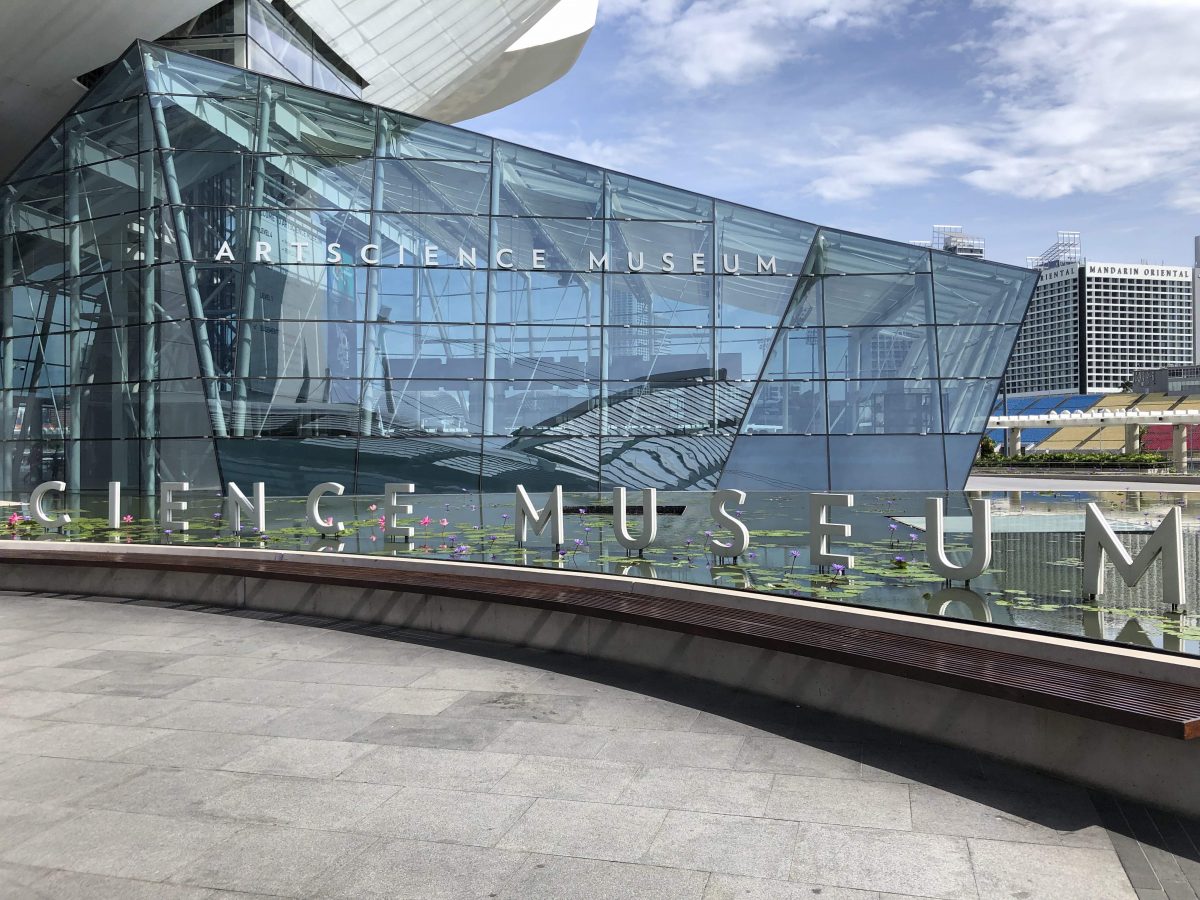
Floating Utopias will run until 29 September 2019. The exhibition is organised by ArtScience Museum and Floating Utopias Foundation, in collaboration with the neue Gesellschaft für bildende Kunst, a German art association.
For more on Floating Utopias, click here.


 Get Audio+
Get Audio+ Hot FM
Hot FM Kool 101
Kool 101 Eight FM
Eight FM Fly FM
Fly FM Molek FM
Molek FM